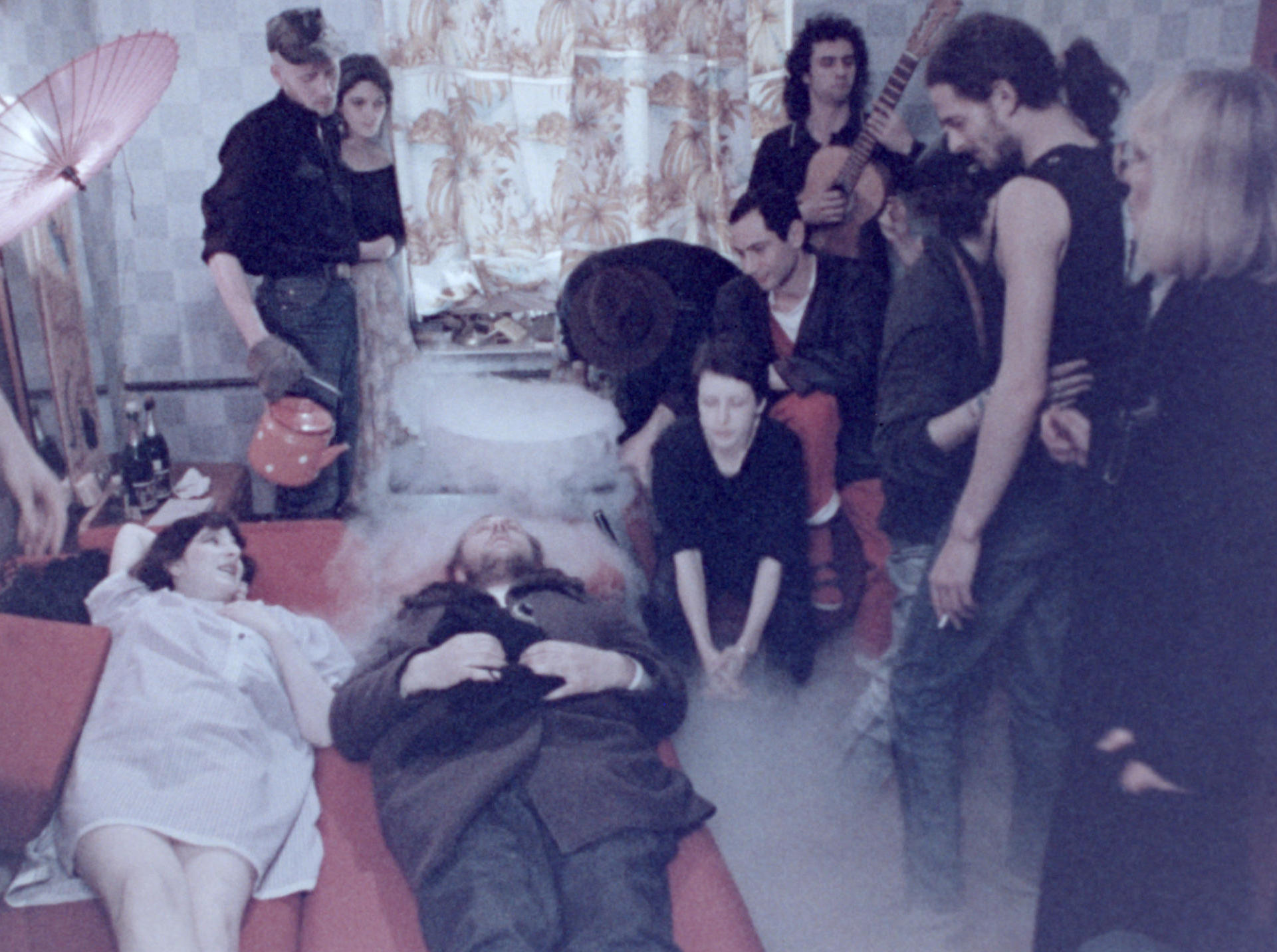
The Asthenic Syndrome begins as a black-and-white drama about a woman who, after losing her husband, falls into a state of despair and becomes a danger to herself and her surroundings. When the images turn to color, it becomes clear that the first part was in fact a film-within-a film, screened in the classroom of a disillusioned school teacher who barely manages to stay awake, let alone capture his students’ attention. But the teacher and his students are not the only ones who got caught in a continuous oscillation between melancholy and indifference, the asthenic or ‘weakness’ syndrome, the film suggests, is symbolic of Russian society on the eve of Soviet apocalypse.
EN
“I could dedicate this film to Tolstoy. This is the key to my film. He says things about the naivety of the intelligentsia who believe culture and art can transform the world… I believe we can only draw attention, provoke, make people think. Try to refine the soul and raise the mental level. But the essence of what is inside cannot be changed. This film is a tragedy consecrated to that fact.”
Kira Muratova1
"I undertook Asthenic Syndrome in the hope of freeing myself from certain obsessive ideas and motifs, from my own gloomy state concerning this life. But I only dove once again into the horror of the existence of every living creature on this earth… That vulgar swearing at the end of the film…was a kind of ‘political meeting’ in the subway. After that I have nothing more to say."
Kira Muratova2
"The central poetic vision of The Asthenic Syndrome – as relevant to America in 1996 as it was to Russia in 1989 – is that two basic, debilitating forms of compulsive behavior are loose in the world today, extreme aggressiveness and extreme passivity: either people walk down the street picking fights at random with other people, or they go to sleep at a moment’s notice, regardless of what’s happening around them. ‘Asthenia’ is defined in the American College Dictionary as ‘lack or loss of strength: debility,’ and some critics have given Muratova’s film an alternate English title, The Weakness Syndrome. Apparently Muratova connects the syndrome to both kinds of behavior. Both, after all, are ways of being ‘out of control.’ It might be said that formally speaking The Asthenic Syndrome is ‘out of control’ as well. It’s a film that alternately assaults you and nods off – usually without warning and often when you’re least expecting it. Mean-spirited and assertive one moment, narcoleptic and in complete denial the next, it bears an astonishing resemblance to the disconcerting rhythm of contemporary public life."
Jonathan Rosenbaum3
- 1Françoise Audé , "Faire voire, refléter, rien de plus," Positif, no. 363, May 1991, 12.
- 2Cited in Jane Taubman, Kira Muratova, (London: I.B.Tauris & Co. Ltd, 2005), 58.
- 3Jonathan Rosenbaum, Home Truths, January 13, 2019.

